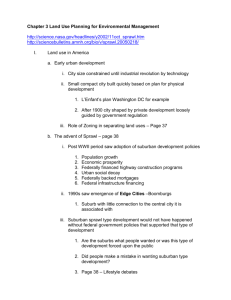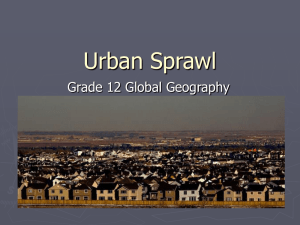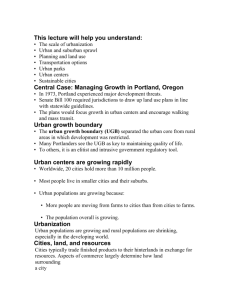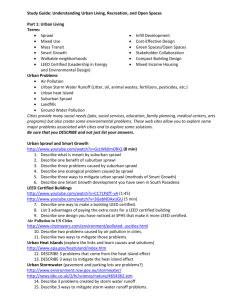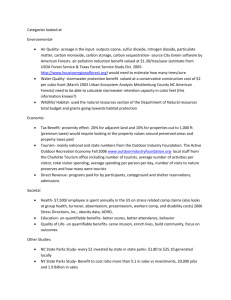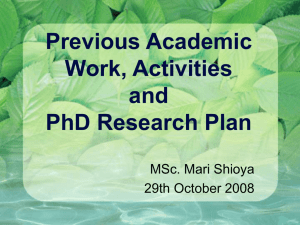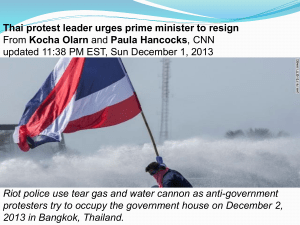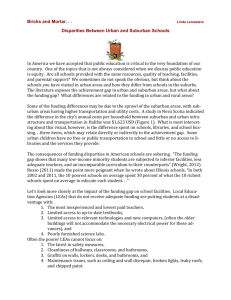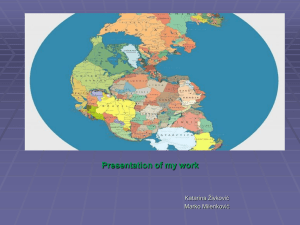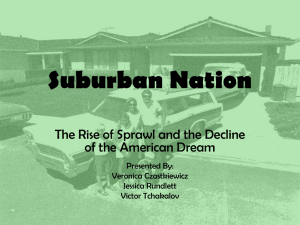Chapter 8 Land Resources Final Review
advertisement
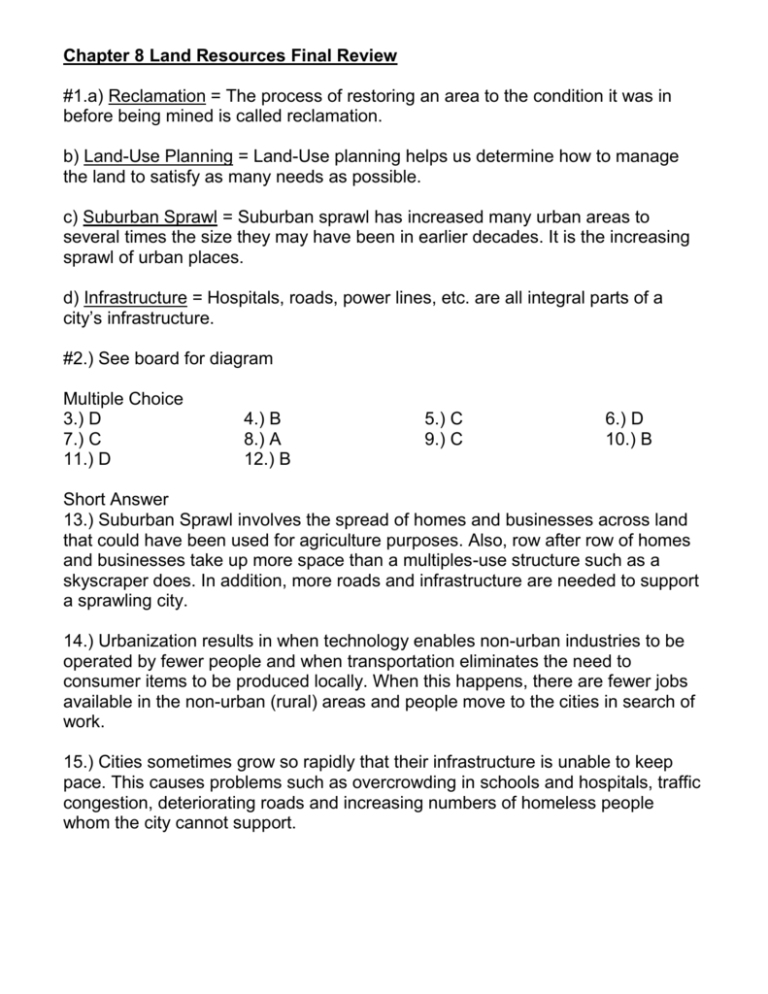
Chapter 8 Land Resources Final Review #1.a) Reclamation = The process of restoring an area to the condition it was in before being mined is called reclamation. b) Land-Use Planning = Land-Use planning helps us determine how to manage the land to satisfy as many needs as possible. c) Suburban Sprawl = Suburban sprawl has increased many urban areas to several times the size they may have been in earlier decades. It is the increasing sprawl of urban places. d) Infrastructure = Hospitals, roads, power lines, etc. are all integral parts of a city’s infrastructure. #2.) See board for diagram Multiple Choice 3.) D 7.) C 11.) D 4.) B 8.) A 12.) B 5.) C 9.) C 6.) D 10.) B Short Answer 13.) Suburban Sprawl involves the spread of homes and businesses across land that could have been used for agriculture purposes. Also, row after row of homes and businesses take up more space than a multiples-use structure such as a skyscraper does. In addition, more roads and infrastructure are needed to support a sprawling city. 14.) Urbanization results in when technology enables non-urban industries to be operated by fewer people and when transportation eliminates the need to consumer items to be produced locally. When this happens, there are fewer jobs available in the non-urban (rural) areas and people move to the cities in search of work. 15.) Cities sometimes grow so rapidly that their infrastructure is unable to keep pace. This causes problems such as overcrowding in schools and hospitals, traffic congestion, deteriorating roads and increasing numbers of homeless people whom the city cannot support. 16.) Many environmentalists object to clear-cutting because it removes a large number of trees at one time and is a major cause of loss of biodiversity. The trees that are left cannot regenerate rapidly and some tree species never grow back, causing displacement and demise of wildlife, having long term, lasting effects on the overall forest ecosystem. It also destroys the natural beauty of natural areas. Some environmentalists prefer selective or single tree cutting, a method that has less of a negative impact. 17.) By managing the land, people can better protect its long term usefulness and promote sustainability of resources that are needed by an increasing population. 18.) About 48% of total available land is used intensively by people, including urban (2%), cropland (17%) and rangeland (29%). 100% of the land available is used in order to serve the cities in one way or another. The land used least by human interference is wilderness, parks and wildlife refuges if any (9%). 19.) Are we “loving to death” our national parks and preserves? Yes. – Too many tourists each year are leaving their ecological footprint behind with the constant need to repair trails, dispose of waste appropriately and having an increase in the number of human-wildlife contact, putting both in danger. Limiting use of tourists to national parts and not preserves will ensure some land is as intact in a natural state as possible for endangered species. No. – People will not appreciate the need for protected space if they cannot have access to it in order to understand its value. Limiting tourists to just national parks will not provide enough education for the need for preserves and refuges. 20.) Over the last 200 years, increasing human populations have led to the overuse of all types of landuse. For example, the need to feed a growing human population has led to a misuse of some agricultural land (overgrazing, slash and burn techniques, overuse of chemical fertilizers, pesticides, herbicides and irrigation, etc.), the infrastructure of developed and developing cities has become overburdened causing urban crisis all over the world, and “protected” areas such as national parks and wildlife refuges are being scarred by development use such as mining and ranching activities and too many visiting tourists.
